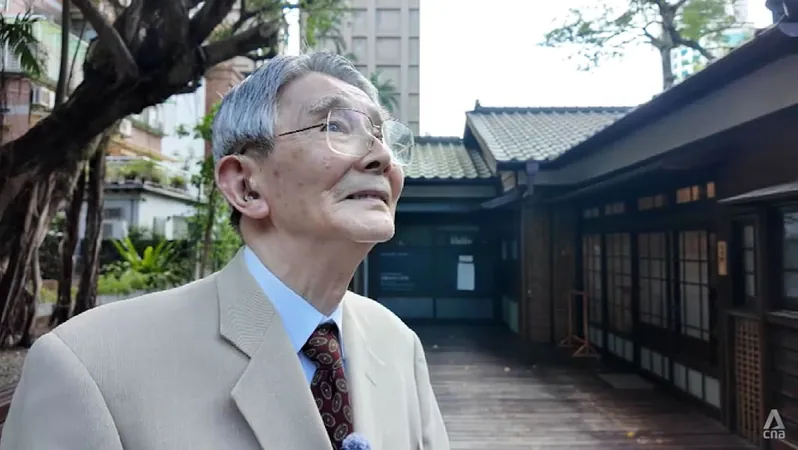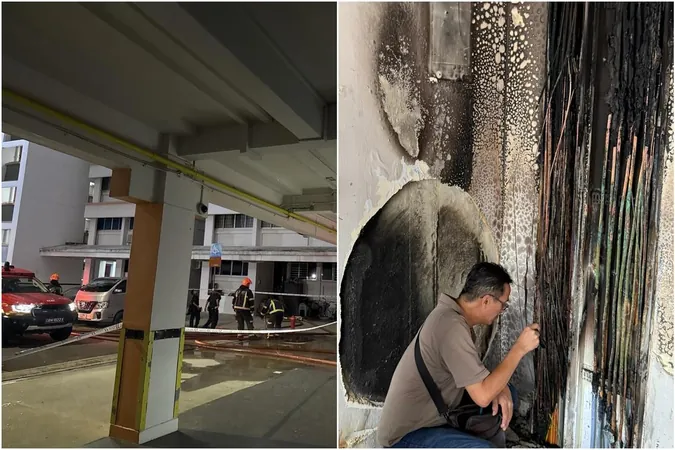
Echoes of Time: The Last Generation Born During Japan's Colonization of Taiwan
2025-09-05
Author: Li
A Hidden Legacy in Taiwan's Landscape
As you stroll through Taipei, remnants of a bygone era are woven into the fabric of the city—Japanese-era architecture still stands tall, telling tales of a colonial past. The Presidential Office Building and other landmarks are poignant reminders of Japan's rule from 1895 to 1945, a time when nearly one-third of Taipei's population was Japanese and schools were conducted in their language.
The Last of the Wansei: A Journey Back to Roots
At the heart of this history is Hisashi Niimoto, a 93-year-old member of the 'wansei'—the cohort of Japanese born in Taiwan during its colonization. An estimated 200,000 such individuals were repatriated to Japan after World War II, yet many hold Taiwan dear as their second homeland. "Taiwan is where my grandfather and father lived. It is my birthplace," Niimoto reflects, revealing the deep emotional ties these last survivors maintain.
Colonization: A Double-Edged Sword
Under Japan's 50-year reign, Taiwan was viewed as a subordinate territory, where aggressive assimilation policies clashed with local resistance. The brutal Tapani incident in 1915 saw thousands perished in a desperate stand against colonial oppression. Yet, this dark chapter also ushered in infrastructure development and economic transformation—factors that some Taiwanese view as positive outcomes of the era.
A Boy's View of War: Memories of Destruction
Niimoto vividly recalls the fateful day of May 31, 1945, when Allied air raids unleashed havoc in Taipei, claiming approximately 3,000 lives and devastating the landscape. As a teenager, he and his peers were caught in the chaos, revealing how war can abruptly alter the trajectory of young lives. "The earth turned upside down with a blast," he remembers—a chilling snapshot of his youthful resolve to become a soldier amid turmoil.
The Aftermath of War: Exile and Resilience
When Japan surrendered and colonial rule shattered, Niimoto's family was forced to leave Taiwan. Carrying mere possessions and memories, they faced the harsh reality of returning to Japan—now as outsiders. Struggling to establish themselves, many wansei, like Niimoto, found themselves navigating a new identity in a familiar yet alien land.
Memories Resurface: The Impact of Ruins
Years later, when Niimoto returned to Taiwan in 1987, he discovered an altered landscape. Once-vacant Japanese homes had been repurposed or lay in ruin, reflecting the passage of time and changing demographics. Scholar Huang Chih-huei highlights the importance of these structures, stating they embody a crucial part of Taiwan’s history, symbolizing both cultural identity and resilience.
Conflicting Memories: Perspectives on Colonial Rule
Recollections of Japanese rule vary widely. Some Taiwanese, like Lu Rong-mao, recall a time of support and prosperity, while others emphasize oppression and violence. Academic Chung Shu-min articulates the complexity of this period—balancing progress against brutality, showcasing the multifaceted legacy of colonization.
Legacy in Honor: Remembering the Warriors of the Past
Among those who served are veterans like Masao Go, a lone survivor from his unit during World War II. His heartfelt journey to memorialize Taiwanese soldiers reflects a profound desire to recognize those who served and fell during the war. As he collaborates on creating a memorial in Yokohama, Masao emphasizes the importance of acknowledging those forgotten by history.
An Enduring Connection
The story of the wansei and the tragic beauty of their ties to Taiwan illustrate a rich tapestry of history, identity, and memory. As they age, the lessons of their past remain vital, reminding us of the complexities of colonization and the enduring spirit of those who lived through it. Their stories challenge us to reflect on our own connections to history, identity, and place.



 Brasil (PT)
Brasil (PT)
 Canada (EN)
Canada (EN)
 Chile (ES)
Chile (ES)
 Česko (CS)
Česko (CS)
 대한민국 (KO)
대한민국 (KO)
 España (ES)
España (ES)
 France (FR)
France (FR)
 Hong Kong (EN)
Hong Kong (EN)
 Italia (IT)
Italia (IT)
 日本 (JA)
日本 (JA)
 Magyarország (HU)
Magyarország (HU)
 Norge (NO)
Norge (NO)
 Polska (PL)
Polska (PL)
 Schweiz (DE)
Schweiz (DE)
 Singapore (EN)
Singapore (EN)
 Sverige (SV)
Sverige (SV)
 Suomi (FI)
Suomi (FI)
 Türkiye (TR)
Türkiye (TR)
 الإمارات العربية المتحدة (AR)
الإمارات العربية المتحدة (AR)